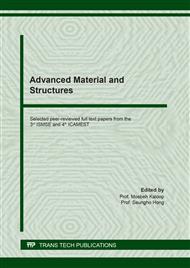p.3
p.11
p.17
p.25
p.33
p.39
p.47
p.53
p.59
Design and Performance Test of Ozone-Plasma Hybrid Reactor for Phenol Waste
Abstract:
The research on phenolic compound degradation using chemical oxidation methods in a plasma reactor was performed with an Ozone-Plasma Hybrid Reactor (RHOP). This device operates by combining ozonation reactions in the liquid plasma within the reaction room. Furthermore, Ozone gas as a reagent is produced by the standard ozonator type Resun RSO-9805 made in Hong Kong and fed into this device, where the liquid phase is mixed within the injector. This way, the two-phase mixture reacts more intensively in RHOP. Also, this combination is designed to intensify hydroxyl radicals while the liquid phase is in an alkaline condition constantly exposed to plasma. The results demonstrated a continuous circulation for 2 hours at the initial concentration of 50 ppm for p-chlorophenol with a volume of 2 liters. This further obtained an 83.98% removal rate and 42.19% COD value decrease.
Info:
Periodical:
Pages:
33-37
Citation:
Online since:
May 2021
Authors:
Keywords:
Price:
Сopyright:
© 2021 Trans Tech Publications Ltd. All Rights Reserved
Share:
Citation:


